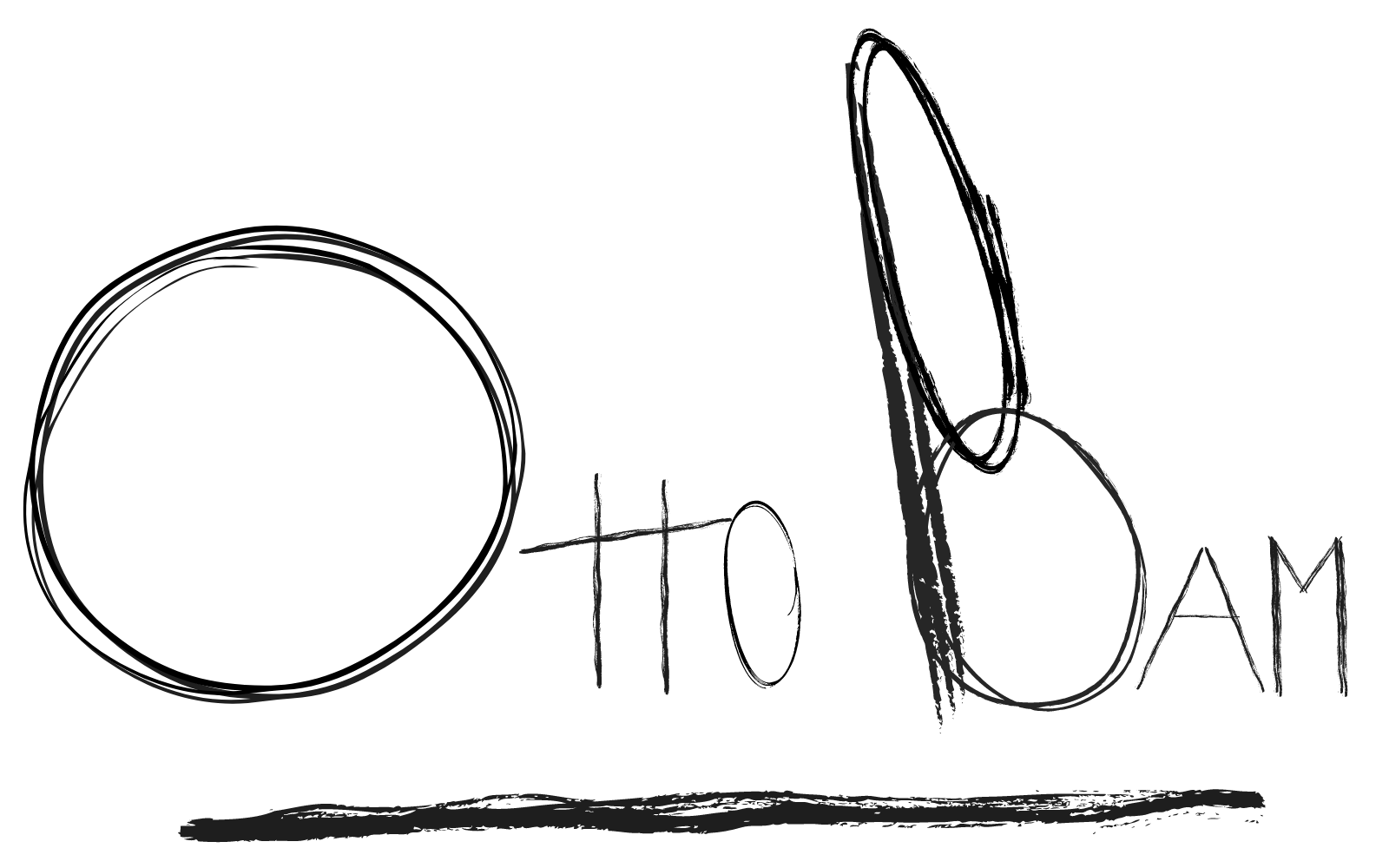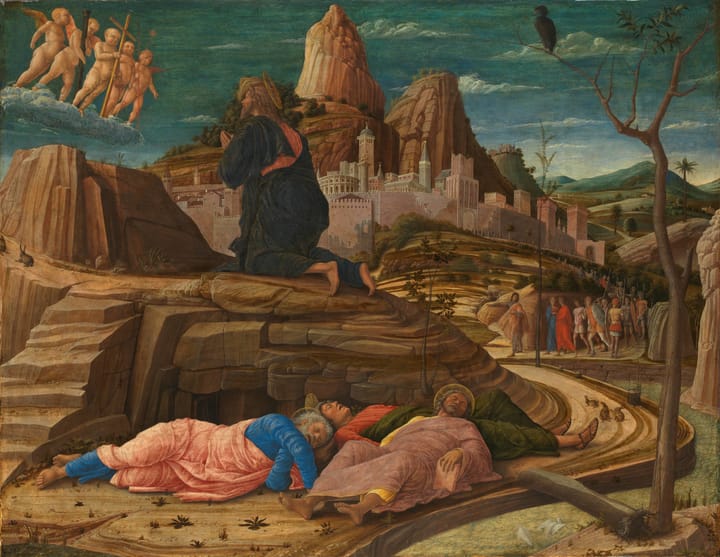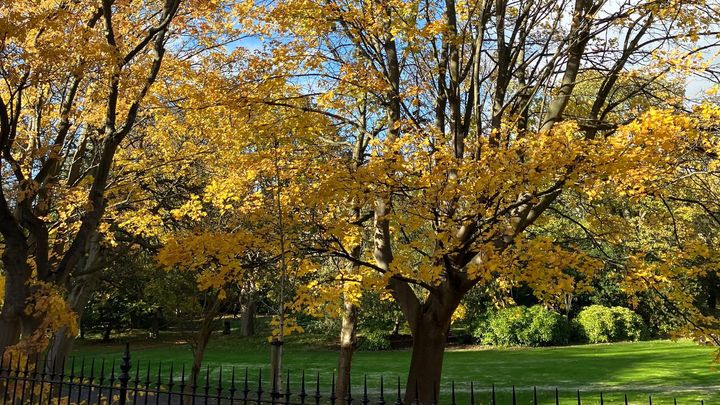The Blessing of the Angel of Edinburgh
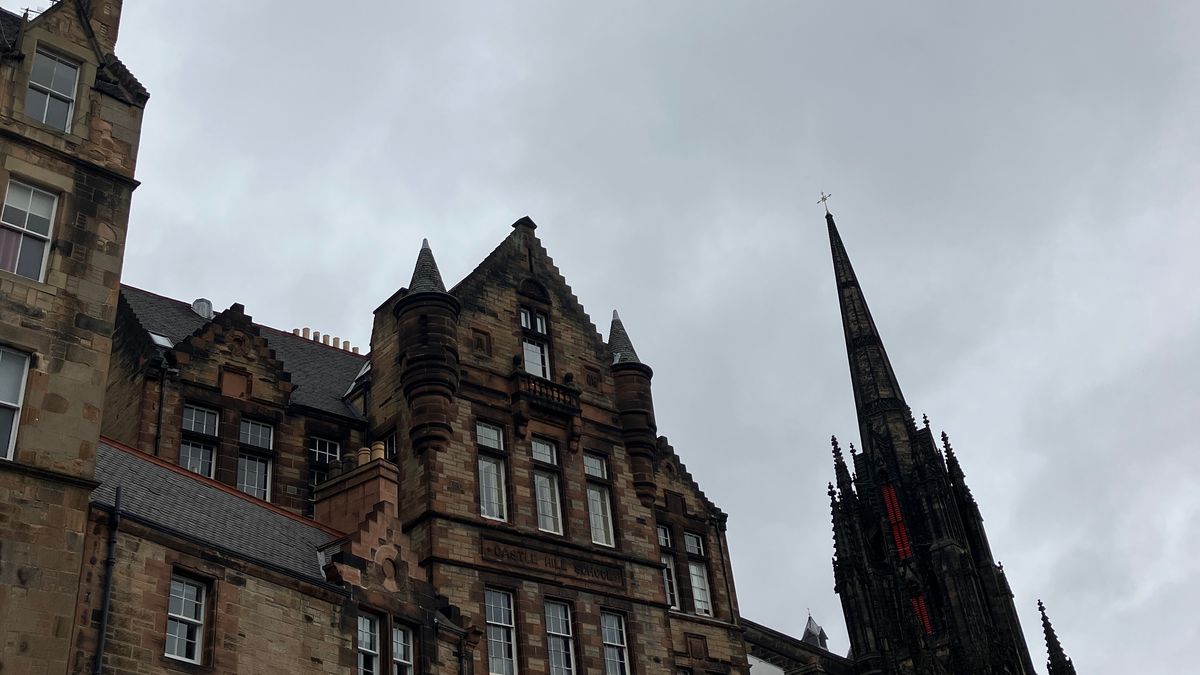
The month of my arrival to Edinburgh has come to an end. October is here with sobering signs of the months ahead – a storm blew into the city yesterday that confirmed, for me, the city's reputation for foul weather. Up until now, one would have been excused for supposing the warnings about the harsh and unpredictable climate of Edinburgh exaggerated. Not so. The weather here can turn suddenly from fair blue skies to battering rain and winds. It is best to remain agnostic towards the prophecies of the weatherman.
But the sudden bouts of rain, the winds rushing through the alleyways, the gloomy shadow cast by thick clouds overhead, all contribute to the deep and alluring character of the place. Here, most days are another round of grappling with the place you're in, your senses are all called to attention. You step out your door and into the ring. It's a violent, but intimate affair, like Jacob wrestling with the Angel. Jacob paid for his blessing with a dislocated hip – you'll get yours at little more than frazzled hair. But if the curse that the Angel placed on Jacob was dislocation, the blessing of the angel of Edinburgh is location. Foul weather is a blessing insofar as it calls you back into the present moment – the value of which can hardly be overstated at a time when we live in the digital ether and fail to notice the incarnate earth beneath our feet, the sacred meeting of time and space which is the present, the only place we can actually live. And if stepping outside your door is going into battle in a small way, then your fellow inhabitants join you as brothers and sisters in arms – there's a fellowship in braving the elements – and a humour that binds you together: when you see your neighbour's umbrella dragging them like a ship beneath bulging sails or inverted, pointing upwards like a witch's broomstick, casting some involuntary incantation on the heavens – as if trying to just make it stop. On the sidewalks are strewn the wreckages of broken umbrellas. A reminder to passersby that though you might be enjoying some sunshine now, the storm could return any minute. It's best to be prepared.
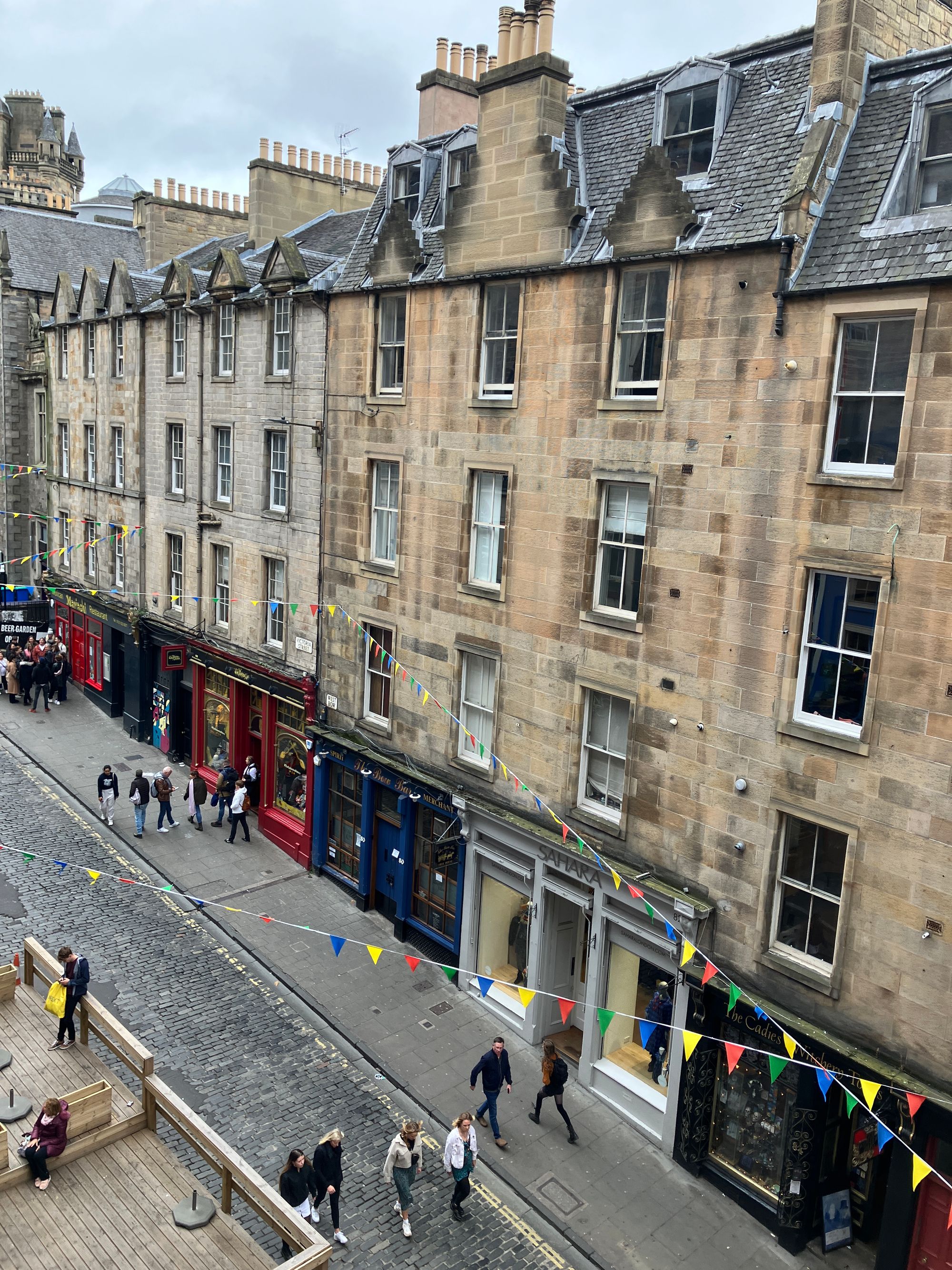
I stepped onto the platform at Waverley Station, just short of midnight, on the 10th of September. The city immediately received me into its folds of delightful darkness. A sense of the blurring past and present lies like fog in the air. The buildings with their blackened stone, the alleys winding and disappearing into a density of nooks. Rain and mist often cloud one's sight, having suddenly rushed into the city. It all contributes to a peculiar delight – a sense of magic mingled into ordinary moments. The city doesn't feel vast and sprawling. It does not have a towering vertical grandeur that leaves you feeling small. Instead, it creates the impression of depth – a sense that you can descend into it. As if there are cities within the city, buildings within the buildings, streets under the streets – as of course there are. The city seems like the accumulation of countless spirals downwards into the earth. One approaches it from above, and walks into it – it reads like Dante's ‘Inferno’.
My daily walk is up the bustling High Street, which forms part of the famous Royal Mile from Holyrood Palace to Edinburgh Castle. I turn off just before the final ascent to the great gates of the castle, towards New College, perched on the mound and overlooking New Town in the North. This is where I'll attend most of my classes for the coming year. The School of Divinity, housed in this beautiful gothic building which dates back to 1846, is home to a vibrant and welcoming intellectual community, which I am only too grateful to be part of.
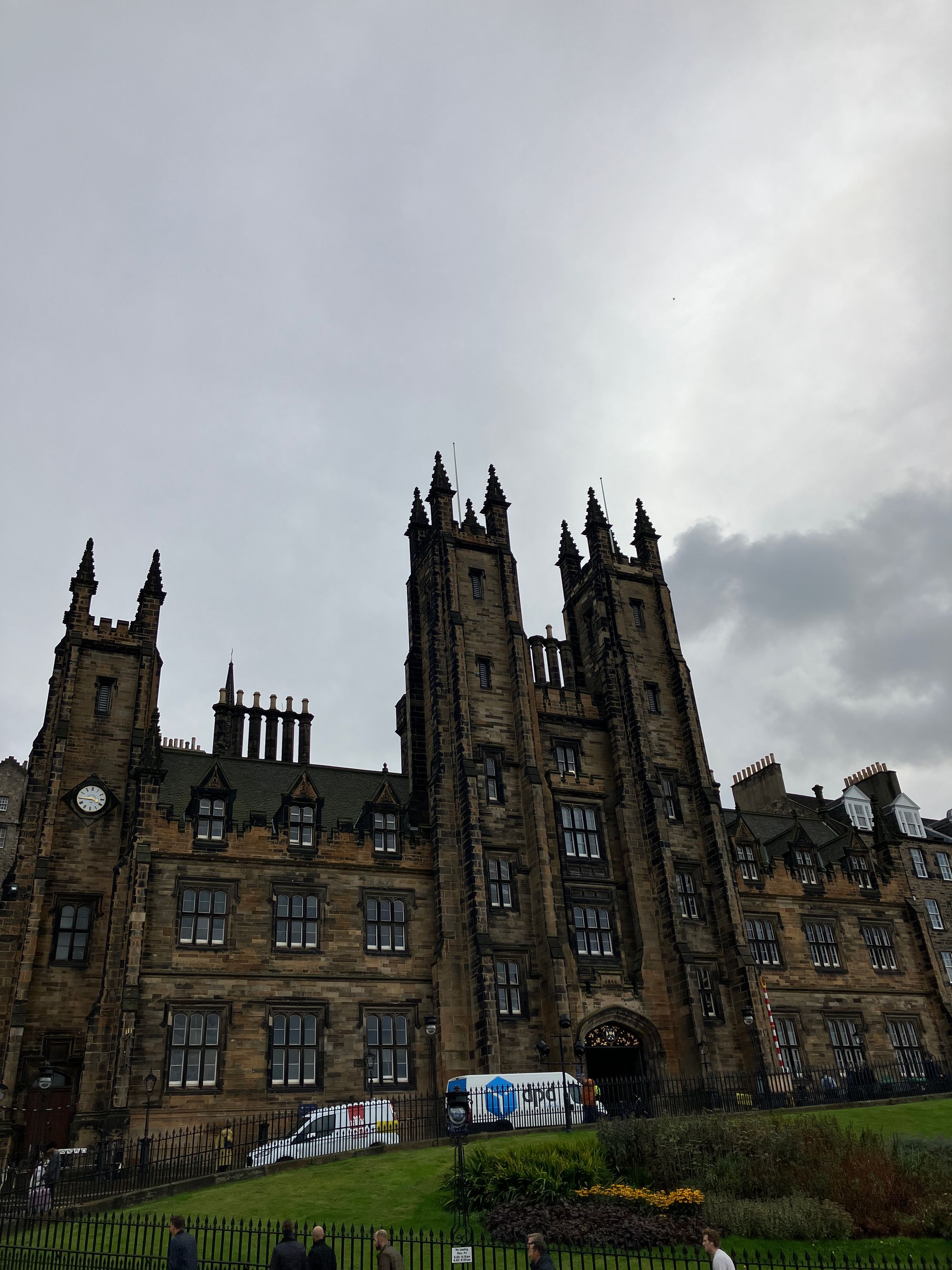
There is much more to say about Edinburgh and there will be ample occasion to do so in the time ahead. But I would like to point out one of my favourite sights in the Old Town skyline. Walking up the Royal Mile, passing the beautiful St. Giles' Cathedral, sunk deep in its foundations, you'll see the soaring spire of Tolbooth Kirk. The bell-tower rises from an obscure black mass punctuated by sharp gothic motifs. The tower looks out in every direction through blood-red windows that burn like great eyes near the pinnacle.
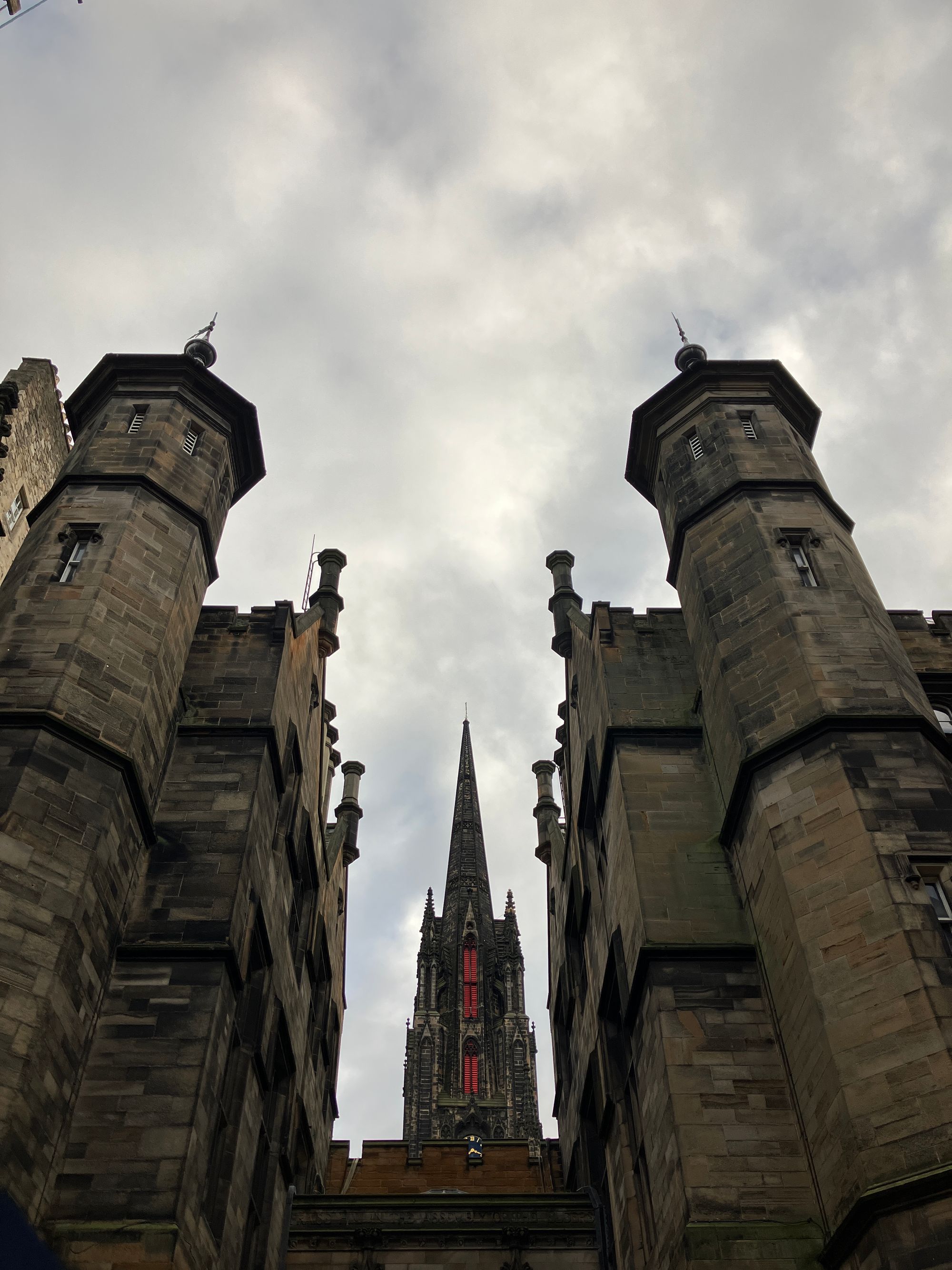
Those familiar with Tolkien's Middle Earth would perhaps be struck by associations of the great castles that had been colonised by Sauron's forces of darkness – glowing with some numinous light – or would perhaps feel Sauron's eye searching but never finding. Quite appropriate, as the cathedral no longer serves as a sanctuary for the Christian faithful, but rather as a "hub" for cultural events and gatherings. It's a house of prayer turned to a house of chatter. To be fair, it was never built to serve as a church, but rather as a meeting place for the general assembly of the Church of Scotland – although it has served as a place of worship for extended periods of time in the latter half of the twentieth century. Nevertheless, I enjoy being a curmudgeon about these things and maintain that the sacred architecture has been rather tragically usurped for lower purposes. Whatever the case may be, the old Kirk is a positively thrilling sight and adds yet more to the enchanting atmosphere of this remarkable place.
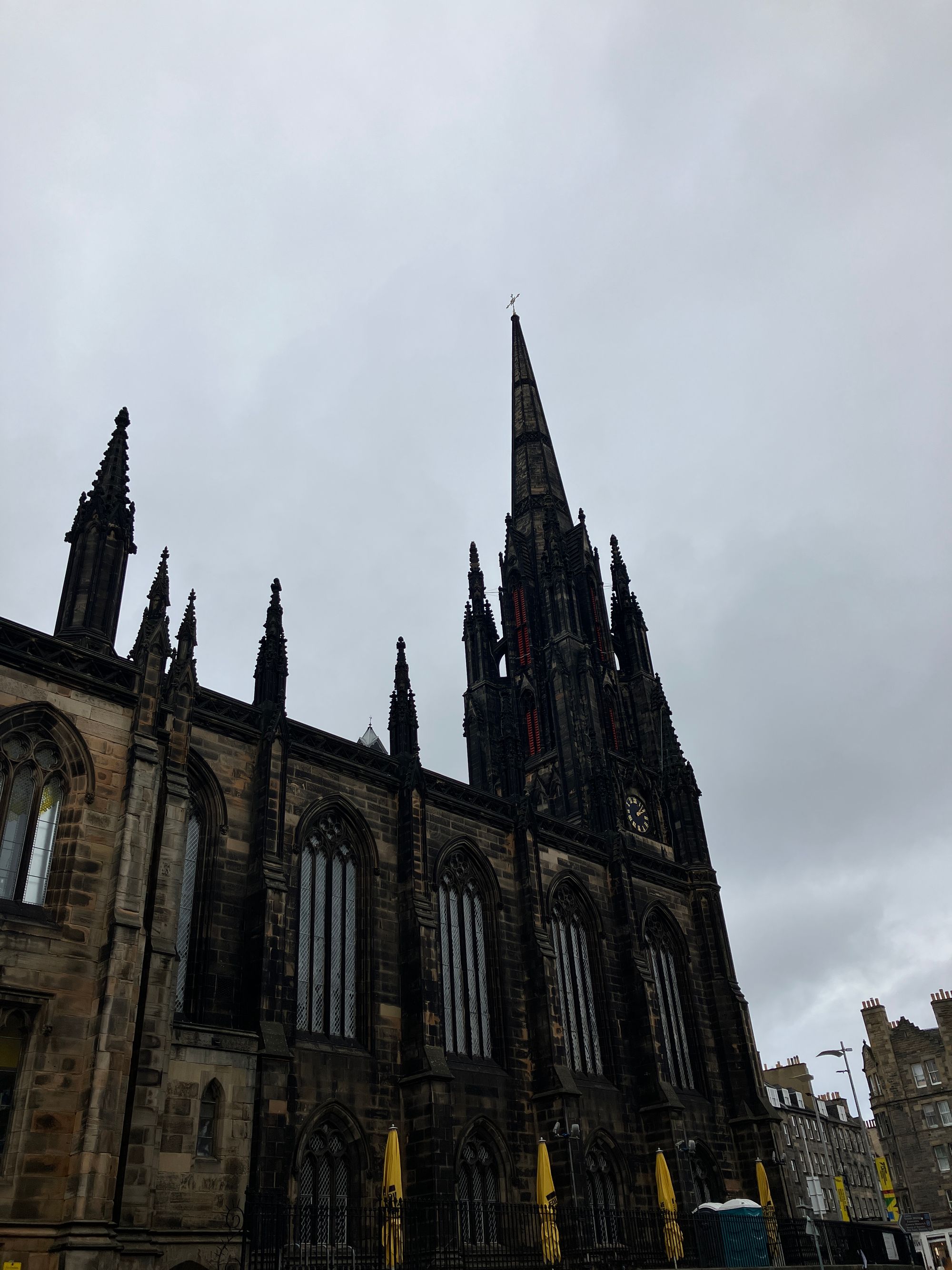
I am blessed to be here, blessed by the mere realisation and many reminders that I am here. A fact that merits thanksgiving from all that draws breath.
